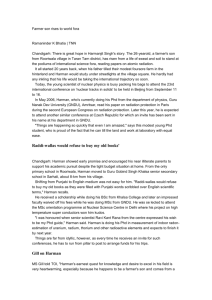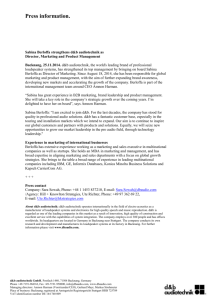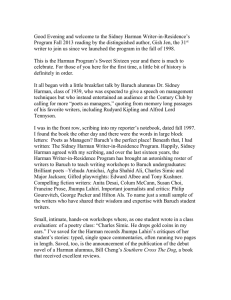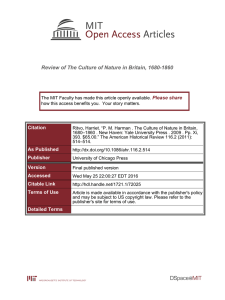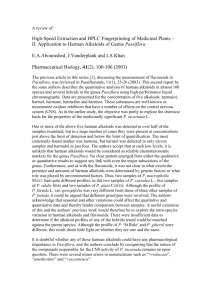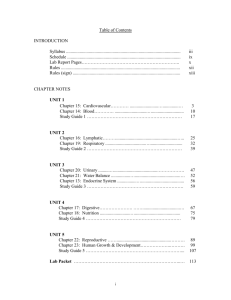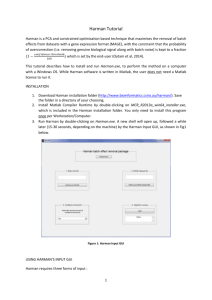here`s - University of Vermont
advertisement
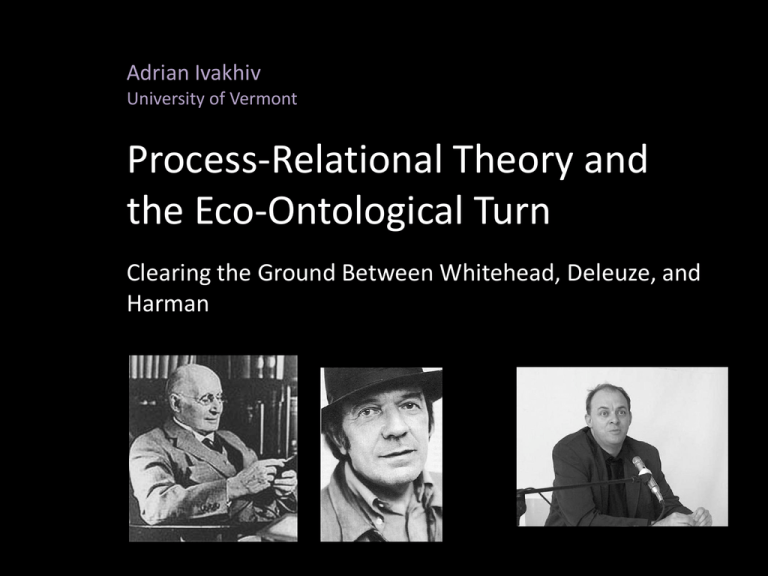
Adrian Ivakhiv University of Vermont Process-Relational Theory and the Eco-Ontological Turn Clearing the Ground Between Whitehead, Deleuze, and Harman Adrian Ivakhiv University of Vermont Beatnik brothers? Harman’s Object a n d t h e Becoming-Whiteheadian of Deleuze 1. Process-relational metaphysical tradition 1. Process-relational metaphysical tradition 2. Dialogue between process-relational and objectoriented philosophy 1. Welcome to the Beatnik Brotherhood “Alfred North Whitehead, Henri Bergson, William James, Gilles Deleuze, Michel Serres, Gilbert Simondon, Gabriel Tarde, Etienne Souriau, and Latour’s own friend Isabelle Stengers.” “there is a major family quarrel underway on this list over a highly classical problem: the isolation and interbleeding of individual things. On one side are figures like Bergson and Deleuze, for whom a generalized becoming precedes any crystallization into specific entities. On the other side we find authors such as Whitehead and Latour, for whom entities are so highly definite that they vanish instantly with the slightest change in their properties. For the first group, substance is too determinate to be real; for the second, it is too indeterminate to be real. 2. Underminers, overminers, and the monkey in the middle Over: Whitehead, Latour, American pragmatists Materialists: do both Under: Bruno, Simondon, Delanda, Deleuze, (Peirce?) 3. Harman’s objects, or what is the object of this exercise? only two kinds of objects in the universe: “the real object that withdraws from all experience, and the sensual object that exists only in experience” Epistemological-political question: Can we know whether an object is real or sensual? If so, how, and what difference does it make for our relation to that object? If not, does this not-knowing make a difference? 3. Harman’s objects, or what is the object of this exercise? Real objects “cannot touch.” “Their reality consists solely in being what they are, not in some sort of impact on other things” (Quadruple Object, p. 73) 3. Harman’s objects, or what is the object of this exercise? Real objects “cannot touch.” “Their reality consists solely in being what they are, not in some sort of impact on other things” (Quadruple Object, p. 73) 3. Harman’s objects, or what is the object of this exercise? Does our non-knowing make a difference? 4. Harman’s Whitehead 5. Affinities and differences Heidegger’s “triplicity”: “A situation is given (past), but is interpreted differently according to which entity is doing the interpreting (future), and the two of these combine into a new and ambiguous model of the present” (QO 58). 5. Affinities and differences Real objects cannot touch each other; they only touch the sensual objects which are the “sensual caricatures” of the real objects, “exaggerated profiles” (QO 75). “any relation immediately generates a new object” (QO 117) … produces an “asymmetry on the interior of the object, between the real me and the sensual tree. […This duality] is inescapable: there is always a non-transitive contact in which a real object caresses merely sensual ones. If the tree relates to me as well, this must happen on the interior of a separate but related object” (QO 117-8) “two-face theory”: “every entity has two sides” (QO 111) 5. The dormant object 5. The dormant object “Yet there is a certain reality possessed by this flag,” Harman writes, “no matter how cruelly ignored, and someday a new throwback union or sarcastic artist may arise to adopt it as an emblem once more” (CP, 9). Conclusion “Yet there is a certain reality possessed by this flag,” Harman writes, “no matter how cruelly ignored, and someday a new throwback union or sarcastic artist may arise to adopt it as an emblem once more” (CP, 9). “Only the zebra’s pieces are able to guide it into new situations of some kind. [… Free will] does not exist for objects, but only for pieces of those objects. [… There is] an excess in our pieces beyond what is needed to create us, and this excess allows new and unexpected things to happen.” “We are awakened neither by our own powers nor by the world outside, but by the swarming landscape within.[…] The dormant zebra, like all other objects, awaits a hailstorm from below.” (CP, 75) Thank you
